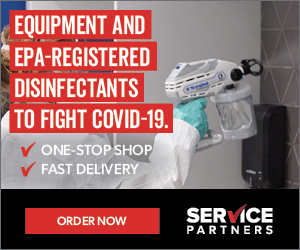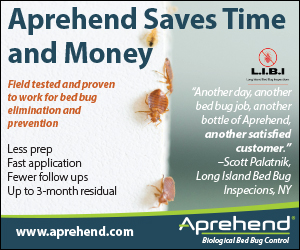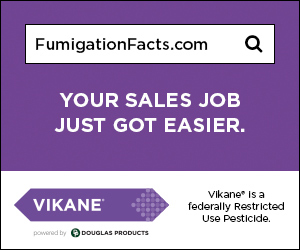 |
||||||||||||||||||||||||||
|
October 2022
|
||||||||||||||||||||||||||
|
Upcoming Events
Member News
Preferred Partners
Just got back from Boston last week from NPMA’s Pest World! I was joined by PCOC President Greg Augustine and it was nice to see a big crowd, and even nicer to see a lot of California members both in the spectacular exhibit hall and the breakout sessions throughout the week! It’s an excellent opportunity to spend time with folks in our industry from all over the country and even the world! BTW, PCOC was also acknowledged at the public policy committee for their work on AB 2146! Well deserved recognition for SPARS Jim Steed and Darren Van Steenwyk.
Chris Reardon
Focusing your safety program solely upon reducing reported accidents and injuries or compliance with OSHA regulations means your safety and loss control program will never be completely successful. You’ll be applying all your controls to the tip of the iceberg, while major hazards may lurk unchecked. Why Create a Safety Culture? Most workplace accidents stem from some type of unsafe behavior: whether it’s inattention, improper posture or improper use of safety equipment. Compliance with regulatory requirements alone seldom makes a real dent in your safety record. For example, if you pattern a safety program on OSHA safety and reporting requirements alone, using them as a benchmark to discipline workers who violate them, your safety program will be only tenuously related to safe workplace behaviors and ineffective at reducing accident levels. But creating a “safety culture” that tackles the attitudes, beliefs and values that govern behaviors related to safety—such as what motivates employees to be safe—will lead to an increase in safer behaviors overall. Creating a corporate safety culture means investing resources, time and personnel into a vigorous occupational health and safety program that wins cooperation at all levels of the company. It looks at employee motivation by asking questions such as: what do workers get from an investment in safety? What needs do unsafe behaviors serve? Do employees feel responsible for what happens at work? Do they take too many risks—especially in response to management requests for speedier production or to make up for being understaffed? Does the company send conflicting signals by rewarding unsafe behaviors when they raise production and punishing them when they cause injury? Persuasion vs. Punishment Experts say worker involvement in safety is proportional to the degree of management understanding, involvement and communication. In fact, worker involvement is as critical to your work safety program as it is to the production process itself. Without a genuine interest in working safely, safety manuals, training sessions and videos will have very little effect on employee work methods. Management lip service to safety via slogans, posters and dry safety meetings that don’t generate actual improvements in working conditions conveys a lack of understanding and commitment to safety. But simply punishing unsafe behaviors won’t work either, because the punishments may backfire, leading workers to continue the unsafe behavior while working harder to hide it from supervisors. Punishment can also give rise to frustration and aggression, leading employees who’ve been punished to reduce output, do substandard work, become careless with products and materials or initiate conflicts with coworkers and supervisors. Increasing rewards and positive reinforcement for safe behavior can help your safety program achieve the results you want. For more information or help, contact the Insurance professionals of EPIC’s PCOC Insurance Program.
“The very essence of all power to influence lies in getting the other person to participate.” Harry A. Overstreet
What do you think it takes to be a great leader? Stop for a minute and think about it. Maybe even take the time to write down a few things. When finished, you can resume below. What is the one thing that is always present with great leaders? They influence others. Whether they are influencing others to make a certain decision, build a widget a certain way, or improve local PCOC districts (as well as the State Association), leaders can be measured by their degree of influence. If you think back to the great politicians, or business leaders, or church leaders in your life, you will notice that all of them had the ability to influence others. We often confuse leadership with many other things. Managers, entrepreneurs, and pioneers being some of the more common. We’ll look at each of these and briefly discuss the differences. Managers – It’s important to note that you typically manage systems, but lead people. Managers will often come up with an idea they think will work better, and then try to force everyone to walk down their newly discovered path. Leaders will help others see how something will benefit them, influencing them so that they want to follow their lead. Managers will often create procedural changes while forgetting about the people. Leaders will create positive change, recognizing that the people are what really matter. Managers typically control actions. Leaders capture hearts. Entrepreneurs and Pioneers – Recognizing a need and filling that need, as an entrepreneur does, or being the first to do something, as pioneers do, does not necessarily make someone a leader. Entrepreneurs often focus on profit over people, and pioneers often look for people to support them in their endeavor to be first. But leaders find a way to support the people that follow them, creating a kind of symbiotic relationship that encourages and motivates people to WANT to follow them. Now, it must be stated that managers, entrepreneurs, and pioneers can also be great leaders. It just doesn’t happen automatically. To be a great leader, one must act purposefully and intentionally, recognizing their responsibility to consistently be growing themselves, so they can create an environment that fosters a growth mindset for those they work with, and inspires them to do great things. As leaders in PCOC, it is beneficial to take a minute and evaluate our own influence on others. Am I being a good leader? Am I creating and fostering a culture that will attract others to develop and grow and want to be a part of the district/organization? “The true measure of Leadership is Influence. Nothing more, nothing less.” If you have Leadership ideas you’d like to share, or a topic you’d like to see explored in a future PCOC Leadership Lens, I’d love to hear from you. All the best! Frequently Asked For Websites
|
||||||||||||||||||||||||||











